Servo press Siemens
Область применения
Decreasing lot sizes, an increasing number of different products, and the need to manufacture these products cost-effectively are the great challenge in metal forming technology. An ideal solution is provided by servomotor-driven mechanical presses, which combine the productivity of conventional presses with the flexibility of hydraulic presses. What is required is that all the components of the drive train be carefully tailored to the mechanics and kinematics of the respective press design.
Обзор
On servo presses, the main drive (servo torque motor) is directly connected to the eccentric of the press without a flywheel or coupling. The variation of the motor speed allows the plunger movement to be accelerated or decelerated as required. An automatically calculated motion profile allows the stroke numbers to be programmed individually and exactly. The press cycle can thus be individually controlled and thereby flexibly adapted to a wide range of tool and/or workpiece requirements.
Дизайн
The consistent hardware basis for Siemens'' universally applicable system solution for servo presses is formed by the SIMOTION Motion Control System, the SINAMICS S120 modular drive family and complete torque motors from the heavy duty series SIMOTICS T‑1FW3/‑1FW4. The PC-based SIMOTION variant or rugged operator panels and industrial PCs from the SIMATIC family provide visualization and order management.
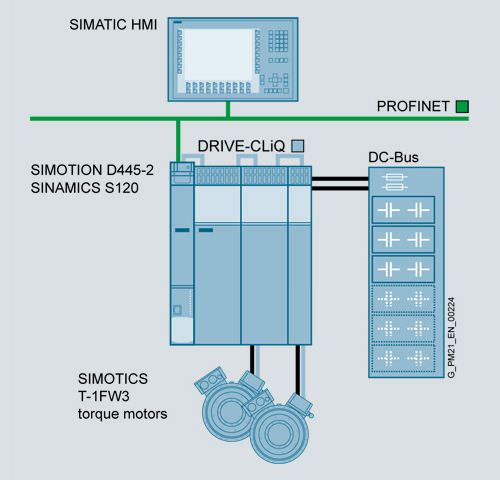
Possible topology of a servo press with 2 main drive motorsand electrical energy storage
Функции
The flexible motion profile allows cycles to be programmed individually and exactly. The result: a significant improvement in productivity. In order to shorten the cycle times, however, the ram must be accelerated rapidly to beyond the upper dead point during the no-press interval and then braked down again or operated with a pendulum stroke.
Optimized motion control
The functions in the SIMOTION SimoPress Servo application use the parameters of the press, the forming process and the drive train (SINAMICS and SIMOTICS torque motor) to calculate ram kinematics which are optimized to save energy, in other words, an optimized traversing profile with smooth, flowing transitions which protect tools and materials and prevent excessive power and torque peaks.
The end user benefits considerably from the result: A new pressing tool can be set up quickly and easily with just a few parameters. SimoPress Servo also includes an input screen with which the motion control of the servo press can be visualized in WinCC flexible.
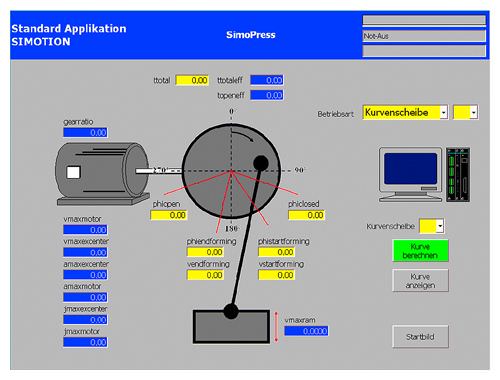
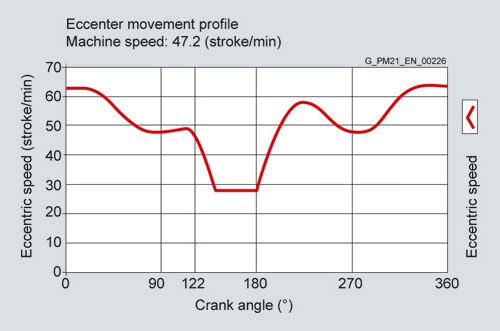
Input screen of SIMOTION SimoPress Servo and the optimized energy-saving motion profile calculated on the basis of the input parameters
Efficient energy management
As on servo presses the energy for the motion and the forming process is provided exclusively by servo drives, there is an oscillation of energy resulting from sudden acceleration and subsequent sudden braking. This effect is cleverly used with intelligent energy storage methods so that the sudden acceleration and braking energy peaks are held in the machine and no longer have to be supplied by the factory power system. The connected power for a servo press is therefore at the same level as a comparable conventional press. The following can be used as energy storage linked directly to the SINAMICS S120 DC link:
- Capacitor modules, several modules can be linked to increase the storage capacity
- Kinetic energy storage
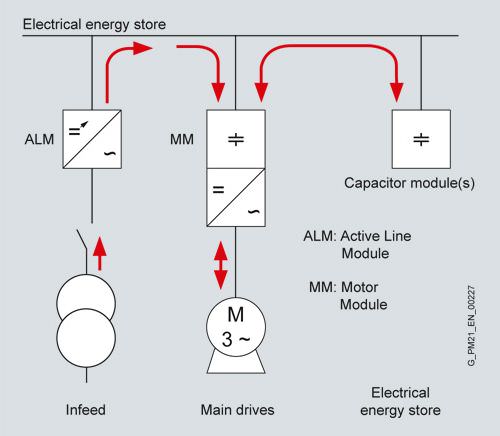
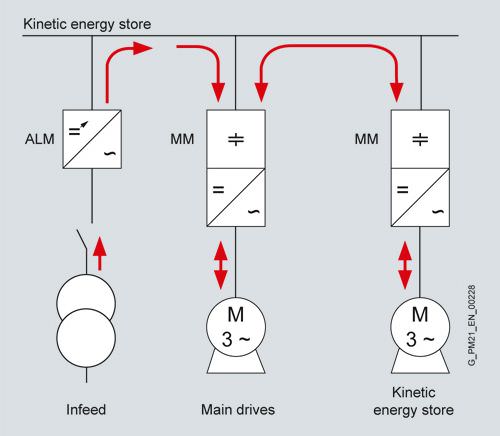
Solutions for servo presses with SINAMICS Energy Management
Особенности
SIMOTION SimoPress Servo covers all significant properties for your servo press..
Advantages at a glance
- Better productivity than can be achieved with conventional drive concepts
- High degree of flexibility because the machine can be set up quickly and easily for new production parts
- Mechanical design is simplified thanks to the use of direct drives
- Preconfigured function modules help to save time and costs
- Greater machine efficiency thanks to an energy-optimized motion profile for the press ram
- Optimization of the entire mechatronic system (mechanical components, drive, control system) means that the optimum machine can be designed faster on the basis of process-optimized drive design
Дальнейшая информация
More information can be found on the Internet at







 Ответ от производителя может занять до 5 дней и более.
Ответ от производителя может занять до 5 дней и более.

